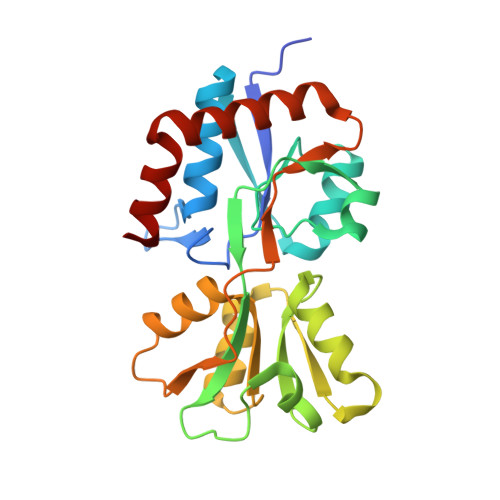Ancestral Protein Reconstruction Yields Insights into Adaptive Evolution of Binding Specificity in Solute-Binding Proteins.
Clifton, B.E., Jackson, C.J.(2016) Cell Chem Biol 23: 236-245
- PubMed: 26853627
- DOI: https://doi.org/10.1016/j.chembiol.2015.12.010
- Primary Citation of Related Structures:
4ZV1, 4ZV2 - PubMed Abstract:
The promiscuous functions of proteins are an important reservoir of functional novelty in protein evolution, but the molecular basis for binding promiscuity remains elusive. We used ancestral protein reconstruction to experimentally characterize evolutionary intermediates in the functional expansion of the polar amino acid-binding protein family, which has evolved to bind a variety of amino acids with high affinity and specificity. High-resolution crystal structures of an ancestral arginine-binding protein in complex with l-arginine and l-glutamine show that the promiscuous binding of l-glutamine is enabled by multi-scale conformational plasticity, water-mediated interactions, and selection of an alternative conformational substate productive for l-glutamine binding. Evolution of specialized glutamine-binding proteins from this ancestral protein was achieved by displacement of water molecules from the protein-ligand interface, reducing the entropic penalty associated with the promiscuous interaction. These results provide a structural and thermodynamic basis for the co-option of a promiscuous interaction in the evolution of binding specificity.
Organizational Affiliation:
Research School of Chemistry, Australian National University, Canberra, ACT 2601, Australia.















